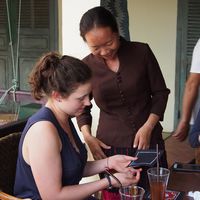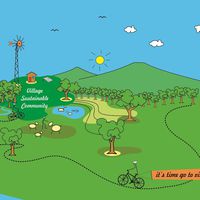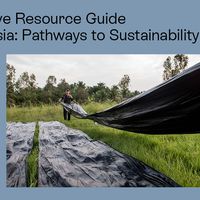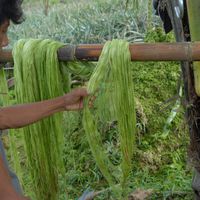Bombs in Laos : Upcycling a Deadly Legacy
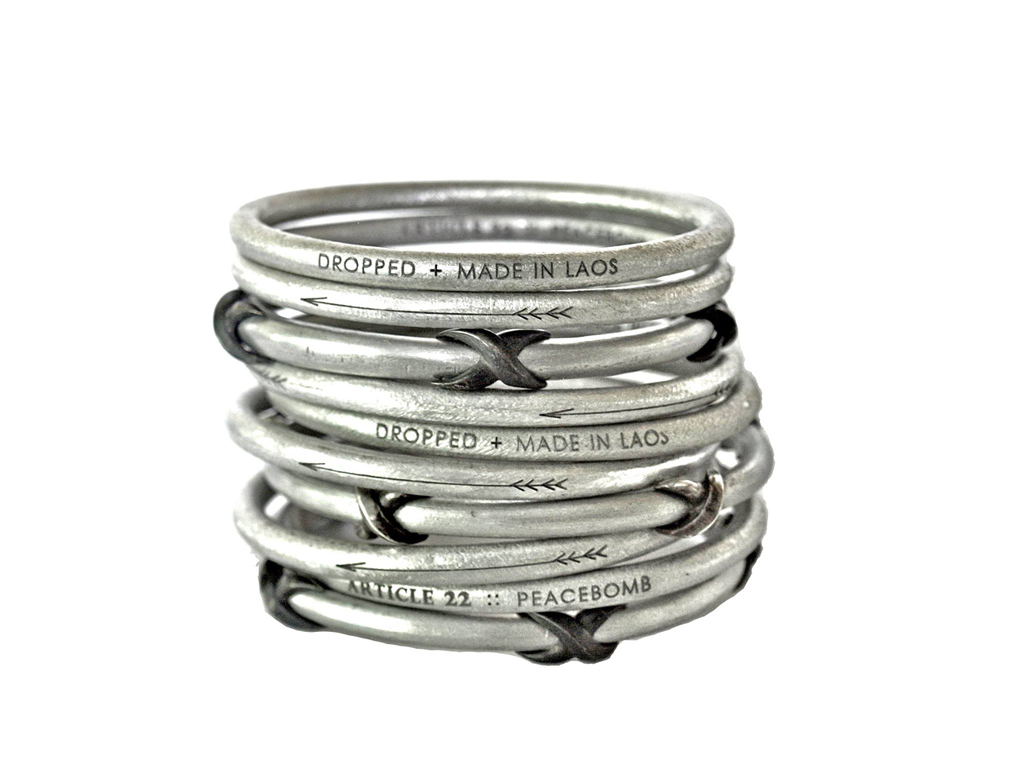 In 2016, ASEF culture360 invites you to get an insight on issues that are highly discussed in the cultural sector across Asia and Europe.
In 2016, ASEF culture360 invites you to get an insight on issues that are highly discussed in the cultural sector across Asia and Europe.Through a number of in-depth articles and interviews, Magali An Berthon will focus on inspiring projects and personalities which make their mark as design and craft innovators and active cultural heritage supporters.
In this article, Magali An dives into one of the darkest times of Laos' modern history. The United States massively bombarded the country during the height of Vietnam war between 1964 and 1973, leaving the land dramatically scarred by millions of unexploded bombs. What to do with these deadly scraps? With the support of dedicated NGOs, a handful of fair trade initiatives such as the jewelry brand Article22 collaborate with locals to turn the reclaimed metal into upcycled designs.
[caption id="attachment_59333" align="aligncenter" width="415"]
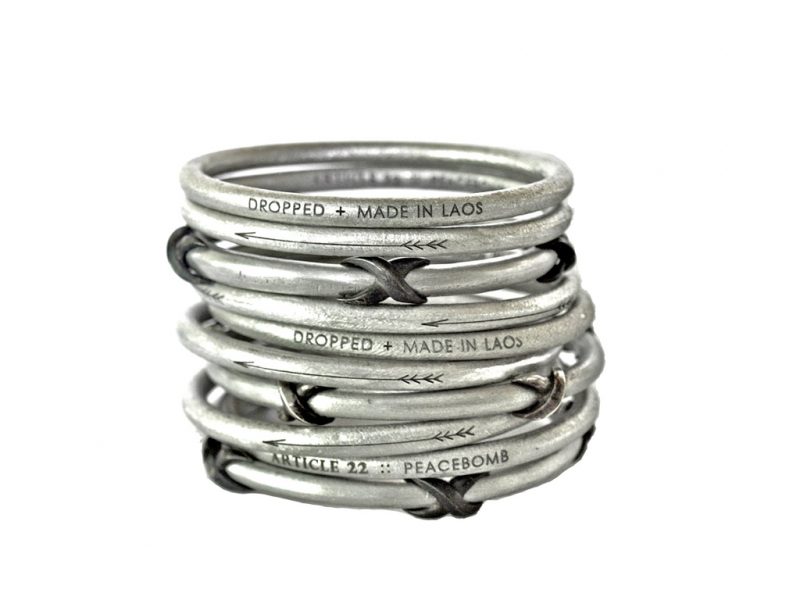 Copyright Article22[/caption]
Copyright Article22[/caption]Laos was dramatically caught in the crossfire of Vietnam war. During their nine aerial bombardments between 1964 and 1973, the United States dropped the staggering number of 270 million cluster bombs – the equivalent of two million tons - on Laos PDR, each cluster bomb releasing thousands of bomblets in the size of a big fruit. The consequences of this instituted carpet bombing operation called Rolling Thunder are still painfully being felt by the Laotian population today. Since 1973, about 20,000 people have been injured or killed by unexploded ordnance (UXO).
[caption id="attachment_59336" align="aligncenter" width="620"]
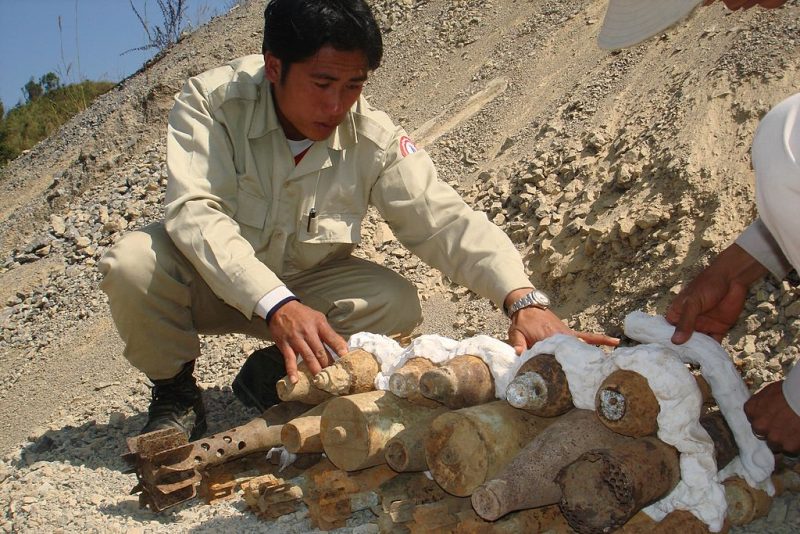 UXO Lao SEOD technician preparing UXO for destruction (2007) Copyright Steffen Peter for UXO Lao[/caption]
UXO Lao SEOD technician preparing UXO for destruction (2007) Copyright Steffen Peter for UXO Lao[/caption]How to deal with the deadly metal scraps that fill the Laotian territory? As of today 25% of the farming lands are considered dangerous in a country, where 80% of the population still subsides on agriculture. The shrapnels are massively spread on farmers' fields, nested under roads and houses, near schools and public buildings. It still injures and kills every day. For Lao farmers, it also represents a substantial loss in the quality of their crop and harvest. After the Vietnam war, collecting these lethal war remnants became a necessity and remained a difficult task. Unfortunately in Laotian families it was most of the time the duty of inexperienced children. The reclaimed material was then sold to Vietnamese scrap traders for a few cents.
In the 1990s, a handful of international initiatives have brought awareness on this concerning environmental and safety issue. Since 1994, the British NGO Mines Advisory Group (MAG) has trained Lao teams to clear the land of unexploded bombs and landmines. According to David Hayter, MAG's CEO, around thirty percent of the dropped ammunition did not detonate. The Swiss non-profit agency Helvetas has actively promoted the national demining programme UXOLAO, helping Laotian families to safely reclaim metal. Back then, they would artisanally melt it into spoons and sell these popular products- very convenient to eat the traditional soup dishes- to the local market.
Following these mine and bomb clearing groups, sustainable companies started to show interest in this abundant recycled material. Local foundries started to use metal from bomb casings but also recycled aluminium cans and random scraps to make utensils and other usual objects. These well-liked products- especially by tourists- are sold in stores such as Ma Te Sai, a fair-trade shop located in Luang Prabang founded in 2010 by Emi Weir, that supports local craftsmanships and especially the work of Lao ethnic groups.
[caption id="attachment_59334" align="aligncenter" width="458"]
 Copyright Article22[/caption]
Copyright Article22[/caption]Article22 takes a step further by designing a complete collection made of bomb remnants. In 2010, American designer Elizabeth Suda-and former merchandiser at Coach- travelled to Laos and discovered the Ban Naphia artisans community near the city of Phonsanvan in the Xieng Khouang province.This area, which nests the well-known archeological site Plain of Jars, has suffered the most from the bombing operation. Local metalworkers have been collecting, recycling and producing metalware since the late 1970s. Following this groundbreaking encounter, Suda founded the brand Article22 in 2013 in New York, named after the 22nd article of the Universal Declaration of Human Rights. With the firm intent to build on this burgeoning upcycling industry, she first designed the Peacebomb bracelet, a fine engraved piece of jewelry derived from bomb casing scraps. Suda implements her own designs, using Laotian techniques and her metalworkers' skillful hands. Article22 works specifically with villagers from Ban Naphia. The process is simple. The collected metal is first treated and supplied again to the craftsmen. It is then melted in clay oven, poured it into moulds, and finally polished by hand.
The brand provides an international marketplace for Laotian craftsmanship and offers a compelling storytelling on this dramatic part of Lao's history. Investing on this local industry is a practical way to heal a scarred country: each jewelry piece represents a portion of land, free of bombs. Beyond invaluable economic developments, it is a chance to recover from devastation, one scrap at the time.
[caption id="attachment_59335" align="aligncenter" width="620"]
 Bomb crater in farming fields, Laos (2009) Copyright AusAID[/caption]
Bomb crater in farming fields, Laos (2009) Copyright AusAID[/caption]- Article 22
https://article22.com - Mines Advisory Group
http://www.maginternational.org - Ma Te Sai
http://www.matesai.com/ - Helvetas
https://www.helvetas.org - UXOLAO
http://www.uxolao.org
Magali An BERTHON is a French Vietnamese textile designer and editor based in Paris. Graduate of the National School of Decorative Arts in Paris, she has gathered a valuable experience as a textile designer for fashion and home collections. She finds inspiration in her many travels especially in South-East Asia and has developed a deep interest for ethnic arts & crafts, natural fabrics and dyes. In parallel, she works as a writer and documentarist specialized particularly on textile know-how from all over the world.
Similar content
14 May 2019
22 May 2017
10 Aug 2022
28 Nov 2016



